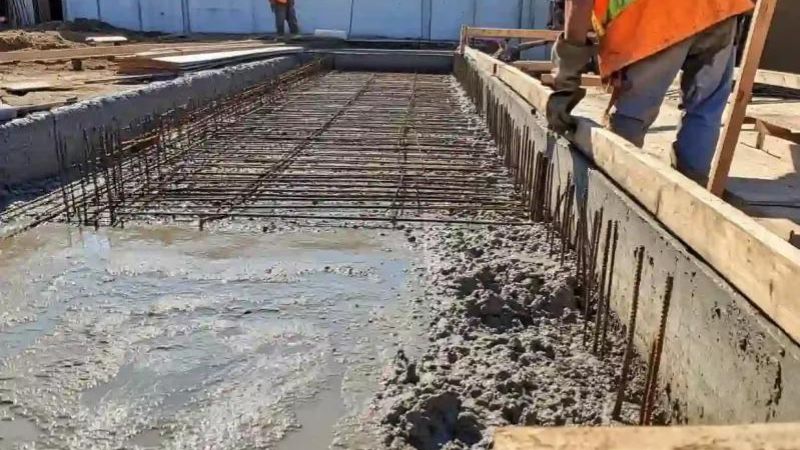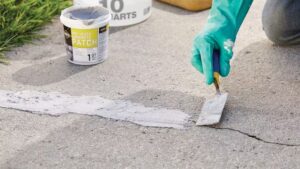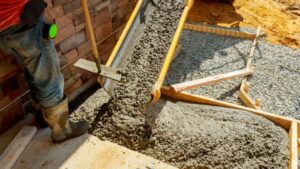Concrete is a versatile building material that comes in various strengths, each designed for specific applications. From residential foundations to large commercial structures, understanding different types of concrete strengths is crucial in ensuring the durability and stability of a project. The strength of concrete is measured in pounds per square inch (PSI), and its appropriate use can vary based on the environmental conditions and load-bearing requirements.
In this blog, we’ll explore the different concrete strengths, including their classifications, applications, and how to choose the right type for your construction project, ensuring optimal performance and longevity.
Understanding Concrete Strengths
Concrete strength is a crucial factor in determining its durability, load-bearing capacity, and performance in different applications. The strength of concrete is typically measured in pounds per square inch (PSI) and indicates the maximum amount of pressure it can withstand before failing. Concrete is tested for its compressive strength after 28 days of curing, which is the standard benchmark for evaluating its performance.
Several factors influence concrete strength, including the mix ratio of cement, water, aggregates, and any additives. The right concrete strength ensures the structural integrity of a project, whether it’s a residential driveway or a large commercial building. Knowing which strength is required can prevent issues like cracking, settlement, or premature deterioration, saving time and money in future repairs.
Also Read:- Asphalt vs Concrete Driveway
Different Types Of Concrete Strengths And Their Uses
Low-Strength Concrete (1,000 to 2,500 PSI)
Low-strength concrete, typically ranging from 1,000 to 2,500 PSI, is used in non-load-bearing applications. This type of concrete is generally used in areas where structural strength is not the primary concern. Common uses include walkways, pathways, and patios where the concrete doesn’t need to bear heavy loads. Additionally, low-strength concrete is often used as a base layer in flooring projects or as a filler material.
Although it offers limited durability compared to higher-strength options, it is cost-effective and works well in projects that don’t face significant environmental or mechanical stress. However, it’s important to note that this strength is not ideal for foundations or other critical structures, as it can lead to cracking under pressure.
Medium-Strength Concrete (3,000 to 4,000 PSI)
Medium-strength concrete, with a PSI range of 3,000 to 4,000, is the most commonly used type in residential construction. This level of strength is perfect for foundations, driveways, sidewalks, and floors. It offers a good balance of cost and performance, making it ideal for many general-purpose construction tasks. Medium-strength concrete is designed to withstand moderate loads and is durable in both indoor and outdoor environments.
Its versatility allows it to be used in many different applications, including structural support for homes, commercial buildings, and public infrastructure. Additionally, it performs well in freezing and thawing conditions when reinforced with proper admixtures, reducing the risk of cracks and other damage due to temperature fluctuations.
High-Strength Concrete (5,000 to 10,000 PSI)
High-strength concrete is typically used in large-scale commercial projects and infrastructure that demand maximum load-bearing capacity. Ranging from 5,000 to 10,000 PSI, this concrete is designed for projects requiring exceptional durability, such as bridges, skyscrapers, and industrial facilities. Due to its superior strength, it can handle extreme environmental conditions, including heavy traffic, severe weather, and high stress from loads.
High-strength concrete is also more resistant to shrinkage and cracking, which adds to its longevity. While it’s more expensive due to its specialized mix design, high-strength concrete ensures the longevity and safety of critical infrastructure projects. In some cases, this type of concrete is also used in high-rise residential buildings where the strength-to-weight ratio is crucial.
Ultra-High-Strength Concrete (10,000 PSI and Above)
Ultra-high-strength concrete is used in highly specialized applications that require unparalleled performance. With a PSI rating of 10,000 or higher, this type of concrete is reserved for extreme load-bearing structures, such as nuclear power plants, airport runways, and heavily loaded industrial areas. It offers incredible durability and resistance to harsh environmental conditions, chemical corrosion, and mechanical stress.
Ultra-high-strength concrete is typically reinforced with advanced materials like steel fibers or polymers to further enhance its structural properties. However, due to its cost and complexity, it is rarely used in residential or small-scale commercial construction. Ultra-high-strength concrete also demands precise mixing, curing, and quality control to achieve its full potential.
Choosing the Right Concrete Strength for Your Project
Selecting the correct concrete strength is essential for ensuring the structural integrity and longevity of any project. The decision largely depends on factors such as the type of structure being built, the load it will bear, and the environmental conditions it will be exposed to. Each project has unique demands, whether it’s a simple residential driveway, a high-traffic roadway, or a towering skyscraper. Understanding these requirements will help you choose the most suitable concrete strength for your project.
For most residential construction projects, medium-strength concrete, ranging between 3,000 and 4,000 PSI, is typically sufficient. This strength level is ideal for applications like driveways, patios, sidewalks, and house foundations. It provides a good balance between cost and durability, ensuring that residential projects can withstand regular use without excessive wear and tear. Medium-strength concrete is also resistant to environmental factors like freeze-thaw cycles, which can cause cracking in weaker types of concrete. Additionally, it’s relatively easy to work with, making it a practical choice for both DIY homeowners and professional contractors.
In contrast, larger or more complex structures, such as high-rise buildings, bridges, and industrial facilities, require high-strength or ultra-high-strength concrete. Concrete in the 5,000 to 10,000 PSI range (or even higher) is specifically designed to handle extreme loads and harsh environmental conditions. These structures often face heavy traffic, high stress, or severe weather, making it essential to use concrete that can withstand such pressure. High-strength concrete also has a lower risk of cracking or shrinking over time, which helps extend the lifespan of the structure. While this type of concrete is more expensive, its enhanced durability makes it a wise investment for projects where safety and long-term performance are critical.
Also Read:- Benefits of Fiber-Reinforced Concrete
When choosing the right concrete strength, it’s also important to consider environmental exposure. For example, in areas prone to heavy rainfall, flooding, or freeze-thaw cycles, the concrete needs to be more resilient to water absorption and thermal expansion. Similarly, industrial facilities or chemical plants may require concrete that is resistant to chemical corrosion. In such cases, special additives or reinforcing materials can be included in the mix to improve the concrete’s performance under specific conditions.
Consulting with a structural engineer or contractor is highly recommended before making a final decision on concrete strength. They can assess the load-bearing requirements, environmental exposure, and design lifespan of the project to ensure the chosen concrete is suitable. Skipping this step or selecting an inadequate concrete strength can lead to structural failures, such as cracking, settling, or even collapse, which could require costly repairs or pose safety hazards. By choosing the correct concrete strength upfront, you not only ensure the long-term durability and safety of your project but also save money by avoiding unnecessary repairs or reconstruction in the future.
Conclusion
For any construction project to be successful and last a long time, selecting the appropriate concrete strength is crucial. By understanding the different types of concrete strengths and their uses, you can ensure your project remains strong, safe, and durable over time. Whether you’re building a driveway, a residential foundation, or a high-rise structure, selecting the appropriate concrete strength will lead to a more efficient and long-lasting result.
FAQs
What is the most common type of concrete strength used in residential projects?
The most common concrete strength used in residential projects is typically 3,000 to 4,000 PSI, ideal for driveways, patios, and foundations.
How do I determine the right concrete strength for my project?
The required concrete strength depends on the load-bearing needs and environmental factors of your project. It is advised to get advice from a structural engineer or contractor.




